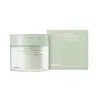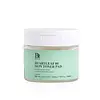What's inside
What's inside
 Key Ingredients
Key Ingredients

 Benefits
Benefits

 Concerns
Concerns

 Ingredients Side-by-side
Ingredients Side-by-side

Water
Skin ConditioningButylene Glycol
HumectantAlcohol Denat.
AntimicrobialCamellia Japonica Flower Extract
Emollient1,2-Hexanediol
Skin ConditioningArginine
MaskingSalicylic Acid
MaskingHydroxyacetophenone
AntioxidantC12-14 Pareth-12
EmulsifyingLactobionic Acid
BufferingEthylhexylglycerin
Skin ConditioningGlycerin
HumectantBifida Ferment Lysate
Skin ConditioningCentella Asiatica Extract
CleansingDisodium EDTA
Lactose
HumectantMelaleuca Alternifolia Leaf Oil
AntioxidantHouttuynia Cordata Extract
Skin ConditioningPortulaca Oleracea Extract
Skin ConditioningPerilla Ocymoides Seed Extract
AntioxidantPanthenol
Skin ConditioningLonicera Caprifolium Extract
AstringentPelargonium Graveolens Extract
MaskingUncaria Tomentosa Extract
Skin ConditioningAgrimonia Eupatoria Extract
AstringentCorydalis Turtschaninovii Root Extract
Skin ConditioningCupressus Sempervirens Leaf Extract
PerfumingNepeta Cataria Extract
TonicMadecassoside
AntioxidantCapryloyl Salicylic Acid
ExfoliatingWater, Butylene Glycol, Alcohol Denat., Camellia Japonica Flower Extract, 1,2-Hexanediol, Arginine, Salicylic Acid, Hydroxyacetophenone, C12-14 Pareth-12, Lactobionic Acid, Ethylhexylglycerin, Glycerin, Bifida Ferment Lysate, Centella Asiatica Extract, Disodium EDTA, Lactose, Melaleuca Alternifolia Leaf Oil, Houttuynia Cordata Extract, Portulaca Oleracea Extract, Perilla Ocymoides Seed Extract, Panthenol, Lonicera Caprifolium Extract, Pelargonium Graveolens Extract, Uncaria Tomentosa Extract, Agrimonia Eupatoria Extract, Corydalis Turtschaninovii Root Extract, Cupressus Sempervirens Leaf Extract, Nepeta Cataria Extract, Madecassoside, Capryloyl Salicylic Acid
Houttuynia Cordata Extract 80%
Skin ConditioningButylene Glycol
HumectantWater
Skin Conditioning1,2-Hexanediol
Skin ConditioningGluconolactone
Skin ConditioningArginine
MaskingAllantoin
Skin ConditioningPanthenol
Skin ConditioningDipotassium Glycyrrhizate
HumectantAmmonium Acryloyldimethyltaurate/Vp Copolymer
Ethylhexylglycerin
Skin ConditioningBetaine Salicylate
AntimicrobialMandelic Acid
AntimicrobialSodium Chloride
MaskingSodium Hyaluronate
HumectantMelaleuca Alternifolia Leaf Extract
PerfumingOriganum Vulgare Flower/Leaf/Stem Extract
Skin ConditioningThymus Vulgaris Extract
PerfumingRosmarinus Officinalis Extract
AntimicrobialLavandula Angustifolia Extract
Skin ConditioningCynanchum Atratum Extract
Skin ConditioningCapryloyl Salicylic Acid
ExfoliatingMadecassic Acid
Skin ConditioningMadecassoside
AntioxidantAsiaticoside
AntioxidantAsiatic Acid
Skin ConditioningDextrin
AbsorbentHouttuynia Cordata Extract 80%, Butylene Glycol, Water, 1,2-Hexanediol, Gluconolactone, Arginine, Allantoin, Panthenol, Dipotassium Glycyrrhizate, Ammonium Acryloyldimethyltaurate/Vp Copolymer, Ethylhexylglycerin, Betaine Salicylate, Mandelic Acid, Sodium Chloride, Sodium Hyaluronate, Melaleuca Alternifolia Leaf Extract, Origanum Vulgare Flower/Leaf/Stem Extract, Thymus Vulgaris Extract, Rosmarinus Officinalis Extract, Lavandula Angustifolia Extract, Cynanchum Atratum Extract, Capryloyl Salicylic Acid, Madecassic Acid, Madecassoside, Asiaticoside, Asiatic Acid, Dextrin
 Reviews
Reviews

Ingredients Explained
These ingredients are found in both products.
Ingredients higher up in an ingredient list are typically present in a larger amount.
1,2-Hexanediol is a synthetic liquid and another multi-functional powerhouse.
It is a:
- Humectant, drawing moisture into the skin
- Emollient, helping to soften skin
- Solvent, dispersing and stabilizing formulas
- Preservative booster, enhancing the antimicrobial activity of other preservatives
Arginine is an amino acid that is important for human development. Your body uses is it to produce hair keratin and skin collagen.
As a cosmetic ingredient, Arginine has antioxidant properties and can also help repair damaged skin. This ingredient is derived either synthetically or from animals.
Arginine isn't fungal acne safe when used in the presence of other lipids (fats, fatty acids, oils, esters, etc). Oils and fats occur naturally within the skin, so take caution when using Arginine if you're prone to fungal acne.
Learn more about ArginineButylene Glycol (or BG) is used within cosmetic products for a few different reasons:
Overall, Butylene Glycol is a safe and well-rounded ingredient that works well with other ingredients.
Though this ingredient works well with most skin types, some people with sensitive skin may experience a reaction such as allergic rashes, closed comedones, or itchiness.
Learn more about Butylene GlycolCapryloyl Salicylic Acid comes from salicylic acid, the famous acne-fighting BHA.
It usually goes by a more common name of LHA, or lipohydroxy acid.
Like salicylic acid, this ingredient is a chemical exfoliant that can help break down the oil in your pores and reduce inflammation.
Though studies for LHA do show it to be less effective than salicylic acid. To be fair, salicylic acid is the reigning monarch of acne treatments.
However, a study from 2009 found LHA to be comparable to BPO, making it a good alternative for people with sensitive skin. Another study of 14 patients found a significant decrease in comedones after using LHA.
Another pro of LHA? It is less irritating than salicylic acid due to its large molecule size.
Large molecules cannot penetrate skin as well, so they are gentler on the skin. LHA is much less penetrative than salicylic acid.
An in-vitro study (not done on a living organism) found only 6% of LHA penetrated past the statum corneum compared to 58% of salicylic acid. An in-vivo (done on a living organism) analysis revealed ~17% of LHA was still present in the top layer of skin after 4 days, versus ~9% of salicylic acid.
Interestingly, a study from 2008 found LHA comparable to another famous acid, glycolic acid.
This study found about 10% of LHA is as effective as 20-50% of glycolic acid in treating hyperpigmentation and fine-lines.
Hydroxy acids have been found to stimulate skin protein, lipids, and thermal thickening. This may have anti-aging benefits.
Learn more about Capryloyl Salicylic AcidEthylhexylglycerin (we can't pronounce this either) is commonly used as a preservative and skin softener. It is derived from glyceryl.
You might see Ethylhexylglycerin often paired with other preservatives such as phenoxyethanol. Ethylhexylglycerin has been found to increase the effectiveness of these other preservatives.
Houttuynia Cordata Extract is more commonly known as Heart Leaf, Fish Mint, or Chameleon plant.
The components found in Heart Leaf give it antioxidant, hydrating, antimicrobial, and anti-inflammatory properties.
Heart Leaf is rich in flavonoids such as quercetin, apigenin, and more. It also contains polysaccharides, the most common type of carbs in food.
Flavonoids have been shown to be effective antioxidants. They help neutralize free-radical molecules. Free-radical molecules are unstable molecules that may damage our skin cells and DNA. The flavonoids in Heart Leaf also help soothe the skin.
Polysaccharides are naturally found in our skin. They play a role in hydrating and repairing the top layer of skin. The polysaccharides in Heart Leaf help moisturize our skin.
Studies show decanoyl acetaldehyde, a component of Heart Leaf oil, is effective at killing bacteria.
The name 'Fish Mint' comes from the herb's natural fishy smell. Is is native to southeast Asia and used throughout the continent for traditional cooking and medicine.
Learn more about Houttuynia Cordata ExtractMadecassoside comes from the super popular skin-soothing ingredient, Centella asiatica. It is one of four active compounds found in the extract of Centella Asiatica.
Madecassoside has antioxidant, anti-inflammatory, and hydrating properties. It contains fatty acids, amino acids, beta-carotene, and phytochemicals.
One study found using Madecassoside with ascorbic acid helped reduce the signs of aging and improved skin hydration.
Learn more about MadecassosidePanthenol is a common ingredient that helps hydrate and soothe the skin. It is found naturally in our skin and hair.
There are two forms of panthenol: D and L.
D-panthenol is also known as dexpanthenol. Most cosmetics use dexpanthenol or a mixture of D and L-panthenol.
Panthenol is famous due to its ability to go deeper into the skin's layers. Using this ingredient has numerous pros (and no cons):
Like hyaluronic acid, panthenol is a humectant. Humectants are able to bind and hold large amounts of water to keep skin hydrated.
This ingredient works well for wound healing. It works by increasing tissue in the wound and helps close open wounds.
Once oxidized, panthenol converts to pantothenic acid. Panthothenic acid is found in all living cells.
This ingredient is also referred to as pro-vitamin B5.
Learn more about PanthenolWater. It's the most common cosmetic ingredient of all. You'll usually see it at the top of ingredient lists, meaning that it makes up the largest part of the product.
So why is it so popular? Water most often acts as a solvent - this means that it helps dissolve other ingredients into the formulation.
You'll also recognize water as that liquid we all need to stay alive. If you see this, drink a glass of water. Stay hydrated!
Learn more about Water